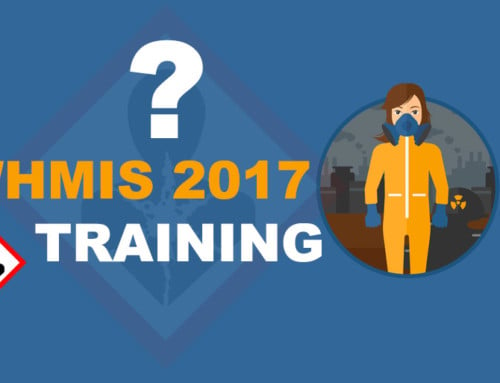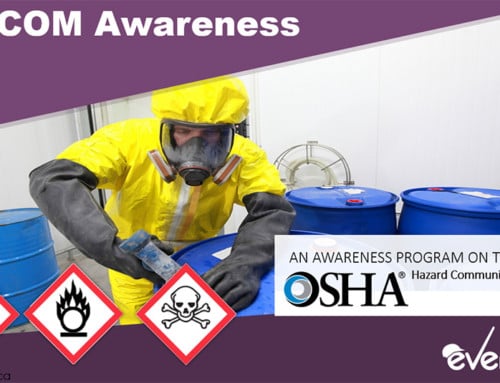OSHA HAZCOM Classification
 The publication of the updated Hazard Communication Standard by the Federal Register on 26th March 2012 marked the final alignment of the HCS 1983 with the Globally Harmonized System of Classifying and Labeling Chemicals (GHS).
The publication of the updated Hazard Communication Standard by the Federal Register on 26th March 2012 marked the final alignment of the HCS 1983 with the Globally Harmonized System of Classifying and Labeling Chemicals (GHS).
Much has changed since the production of OSHA’s original Hazard Communication Standard in 1983.
For instance, the global market has transformed substantially, resulting in fewer barriers to international trade in hazardous chemicals. Similarly, demographics of the American workforce have changed considerably. Therefore, OSHA has had to incorporate the GHS to the Harmonized Communication System to account for workforce changes, adapt to globalization and increase worker safety.
HAZCOM Classification
The original HCS required chemical importers and manufacturers to determine and state the hazards of the chemicals they imported or produced in order to promote safe handling, usage, and storage of the chemicals. However, the old HCS did not have defined parameters for classifying the chemicals, allowing the importers and manufacturers to use whatever classification methods and groups they chose.
The original HCS did not have clear verbiage for communicating chemical hazards and allowed room for confusion and workplace accidents and injuries. Therefore, to improve the consistency and quality of chemical hazard information at the workplace, OSHA has revised the original HCS by incorporating the GHS classification criteria for hazardous chemicals.
The Revised HCS (HazCom 2012) uses an updated classification system that provides a better starting point for communicating chemical hazards to employers and workers. The Hazcom classification provides clear and specific criteria for classifying physical hazards, health hazards, and mixtures. It involves the identification of the hazards of chemicals or mixtures by assigning them to specific categories of hazards according to defined criteria. In fact, the specific criteria ensures that the evaluation of the hazardous effects of different chemicals is consistent across importers and manufacturers, resulting in safety data sheets and labels that are more accurate and effective.
HAZCOM 1994 vs. HAZCOM 2012 Classification
While the original Hazard Communication Standard is called HCS 1983 because of the date of passage, OSHA refers to the HCS pre-GHS alignment as Hazcom 1994. In Hazcom 1994, OSHA recommended that chemical distributors and manufacturers had to inform downstream users of the physical and health hazards of their products through material safety data sheets (MSDSs) and labels, but left the bulk of what was to be communicated about the hazards to the discretion of the distributors and manufacturers. As a result, chemical hazards were simply evaluated and given simple designations to indicate their hazardous effects.
The common features of Hazcom 1994 were:
- Hazard evaluation was simply a “Yes” or a “No” process in which chemicals were either hazardous or not
- Hazardous chemicals were given simple designations like flammable, gas under pressure or carcinogenic
- Performance-based labels: Labelers decided what and how much information to include on labels
A number of problems at the workplace existed prior to Hazcom’s alignment with GHS. Some of the more significant problems included:
- Wildly different information was filtered down to end-users. For example, if an employer purchased acetone from three different suppliers, the workers saw three different labels and three different safety data sheets of basically the same product.
- For different chemicals with the same hazards, the hazard information seen by workers varied significantly from MSDS to MSDS and from label to label.
It is these problems that the GHS-aligned Hazcom 2012 will remedy when fully implemented by chemical suppliers.
According to Hazcom 2012, chemical distributors and manufacturers must:
- Evaluate the chemicals they produce to know if they are hazardous or not
- Know how hazardous a chemical is (know the degree of hazard)
- Classify the chemicals: Hazcom classification means placing chemicals into broad classes depending on the nature of their effects and then into categories depending on the severity of their effects
- Consider the complete range of existing scientific literature and other critical evidence on the potential hazards of their products. However, there is no requirement that they test the chemicals to determine their hazards before classification
- Follow OSHA’s specific guidelines on chemical classifications and what constitutes a hazard, including OSHA’s recommendations on language and range of information
Hazcom 2012 not only provides new classifications for hazards but also gives a new definition of a hazardous chemical. And while Hazcom 1994 simply defined a hazardous chemical as one that caused any of the physical or health hazards outlined in the standard, Hazcom 2012 gives a precise definition of what constitutes a physical or health hazard.
Hazard Classes and Hazard Categories
Hazard class refers to the nature of a physical or health hazard. Examples of hazard classes include flammable solid, explosive and carcinogen. Hazcom 2012 uses many of the hazard classes found in the old HCS but also includes some new classes such as corrosive metal, cell mutagenicity and reproductive toxicity.
Hazard category refers to the divisions made within a hazard class to help compare the severity of different hazards occurring within the same class. For example, flammable liquids and oral acute toxicity are two hazard classes with 4 hazard categories each.
Health Hazards
- Acute toxicity
- Serious eye irritation/eye damage
- Skin irritation/corrosion
- Respiratory sensitization/skin sensitization
- Carcinogenicity
- Germ cell mutagenicity
- Reproductive toxicity
- Aspiration toxicity
- Target organ systemic toxicity from single exposure
- Target organ systemic toxicity from repeated exposure
Physical Hazards
- Explosives
- Flammable gases
- Flammable aerosols
- Flammable liquids
- Flammable solids
- Oxidizing gases
- Oxidizing liquids
- Oxidizing solids
- Pyrophoric liquids
- Pyrophoric solids
- Self-reactive substances
- Self-heating substances
- Substances that emit flammable gases when in contact with water
- Gases under pressure
- Substances corrosive to metal
Environmental Hazards
Environmental hazards primarily consist of Hazards to aquatic environment.
The hazards are further categorized as either acute aquatic toxicity or chronic aquatic toxicity. Chronic aquatic toxicity is further sub-divided according to bioaccumulation potential or rapid degradability.
Under Hazcom 2012, a product must be classified into one of the above classes before it can be labeled. And once it has been classified, it can be further placed into a category depending on the severity of its effects or the degree of danger it poses.
Benefits of HAZCOM 2012 Classification
Hazcom’s alignment with GHS has brought about several benefits to the way in which hazardous chemicals are classified. Some of the more notable benefits include:
- All chemical suppliers will use the same hazard classes and categories, resulting in same hazard verbiage, messages and pictograms on labels
- Workers can more easily understand information on safety data sheets and labels
- More reliable safety data sheets and labels for use by workers, safety officers, emergency responders and healthcare professionals
- The elimination of confusion caused by conflicting national and international hazard classification requirements
- Improved worker safety
- Reduced trade barriers






